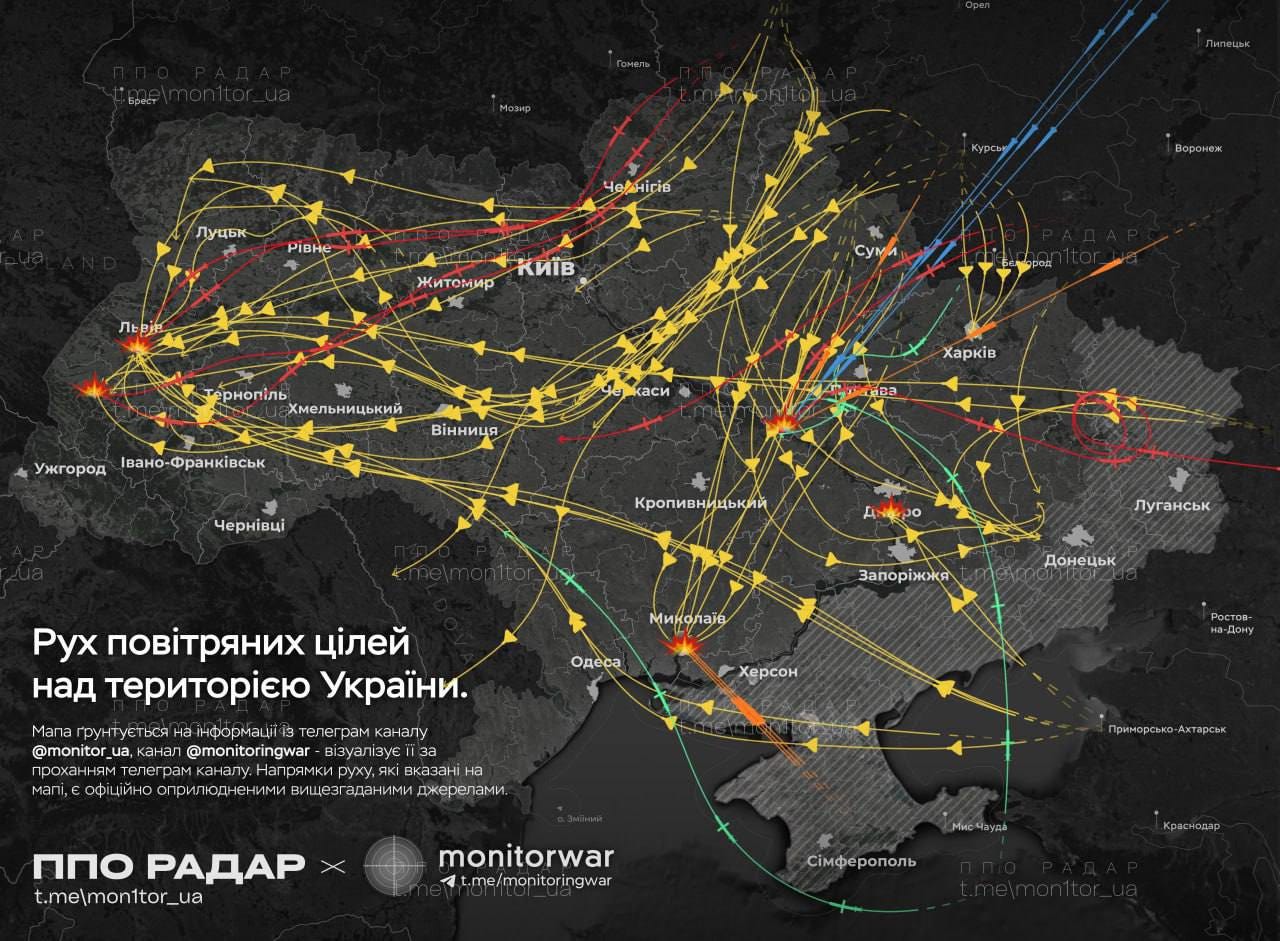Russia's Biggest Airstrike Yet Shocks Ukraine, Jolts NATO
Uncover how a 537-weapon blitz exposed Ukraine's defense strain, escalated NATO alert status, and signaled Russia’s next phase of full-spectrum pressure.
Russia’s June 29, 2025, Aerial Assault on Ukraine
What Happened
On the night spanning June 28 to 29, 2025, the Russian Federation launched its most extensive aerial assault on Ukraine since the outset of its full-scale invasion in February 2022. According to data released by the Ukrainian Air Force and corroborated by multiple independent sources, the operation involved a total of 537 aerial assets. These comprised 477 unmanned aerial vehicles (UAVs), including both explosive-laden drones and decoys, as well as 60 missiles, among them cruise, ballistic, and aeroballistic variants.
Ukrainian air defense systems succesfully intercepted 249 aerial threats using a combination of surface-to-air missiles and aircraft-based interception. An additional 226 were rendered ineffective through the employment of electronic warfare techniques, including jamming and signal disruption.
Of the seven ballistic missiles launched, only one was intercepted, and none of the four Kinzhal hypersonic missiles were neutralized. This highlights the limitations of Ukraine’s current high-altitude intercept capabilities.
The aerial bombardment inflicted damage on infrastructure accross at least 11 administrative regions, including Kyiv, Kharkiv, Kherson, Dnipropetrovsk, Mykolaiv, Zaporizhzhia, Cherkasy, Poltava, Ternopil, Ivano-Frankivsk, and Lviv. Civilian and industrial sites were hit, resulting in fatalities and widespread disruption to critical services.
A Ukrainian Air Force pilot operating an F-16 fighter jet was killed during combat operations while engaging incoming threats. His aircraft sustained damage after neutralizing multiple drones, illustrating both the tactical value and vulnerability of Ukraine’s limited fleet of advanced air assets.
The attack's geographic reach extended well beyond the contested eastern and southern fronts. Strikes into western Ukraine, particularly near the Polish border, prompted NATO to scramble fighter aircraft from bases in Poland and elevate its regional air defense readiness posture. No Russian ordnance crossed into NATO territory.
Why It Matters
Russia’s June 29 operation represents a strategic inflection in its campaign against Ukraine, one that emphasizes massed saturation tactics, multi-domain integration, and geographic expansion of target zones.
Operational Adaptation: The deployment of hundreds of low-cost, low-technology UAVs (many configured as decoys) was designed to overload Ukraine’s air defense architecture. By forcing defenders to expend high-value interceptor missiles on targets with negligible destructive capability, Russia is executing a cost-imposition strategy that accelerates the depletion of Ukraine’s finite air defense inventory. This tactic is not incidental; it is central to Moscow’s evolving method of aerial warfare.
Strategic Projection: The targeting of regions far removed from the active front lines (including urban centers in western Ukraine) signals Moscow’s intent to demonstrate strategic reach and to impose comprehensive national vulnerability on Ukraine. By striking deep into the Ukrainian rear, Russia compels Kyiv to allocate defense resources more broadly, thus stretching operational coverage and weakening point-defense capacity.
Deterrence Signaling: The scale and scope of the attack serve a dual communicative function. Internally, it reinforces the Russian leadership’s posture of resolve and control. Externally, it conveys a rejection of diplomatic pressure and a willingness to escalate independently of Western timelines or initiatives. The absence of targeting restraint suggests that Moscow perceives continued escalation, rather than negotiation, as the more advantageous path toward achieving its war aims.
Regional Security Reverberations: The response from NATO, particularly the scramble of Polish air assets and the elevation of regional readiness levels, underscores the strategic sensitivity of Russian operations near alliance borders. While the assault did not cross into NATO territory, its proximity raised the probability of unintended military encounters; this heightens the risk of escalation by miscalculation or accident.
Systemic Consequence: The attack represents not merely an intensification of conflict but a transition toward systemic warfare aimed at degrading Ukraine’s capacity to function as a coherent state. Russia’s focus on industrial infrastructure, energy grids, transportation hubs, and urban morale infrastructure reveals an intent to induce economic exhaustion and societal demoralization. This approach shifts the war’s character from territorial contestation to strategic denial. In this context, the destruction of capability takes precedence over the capture of ground.
Diplomatic Progress Toward a Syria–Israel Peace Agreement
What Happened
As of mid-2025, the governments of Israel and Syria are engaged in the most advanced bilateral peace negotiations in their shared history, with the goal of
Keep reading with a 7-day free trial
Subscribe to Horizon Geopolitics to keep reading this post and get 7 days of free access to the full post archives.







